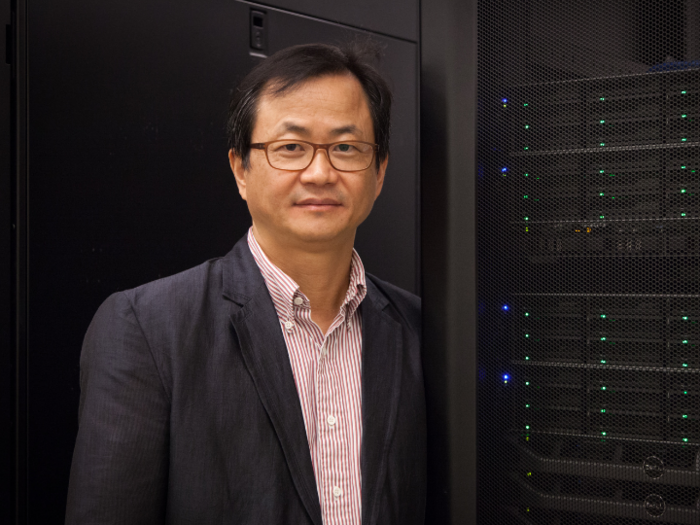When you look up at the sky and examine the color and shape of the clouds, you can likely judge whether rain is on the way. Not only do clouds release showers, snow, hail and other kinds of precipitation, but they also hold crucial information to better understand the earth’s climate.

Credit: University of Houston
When you look up at the sky and examine the color and shape of the clouds, you can likely judge whether rain is on the way. Not only do clouds release showers, snow, hail and other kinds of precipitation, but they also hold crucial information to better understand the earth’s climate.
University of Houston Associate Professor of Earth and Atmospheric Sciences Yunsoo Choi is studying the interaction between clouds and aerosols, the tiny particles that comprise clouds, and how cloud formation and location in the atmosphere maintains the earth’s temperature. Choi was awarded a $550,728 grant from the Department of Energy’s Office of Science to fund his and his graduate students’ work over the next three years.
“Clouds cover about 70% of the earth’s surface,” said Choi, a faculty member in the UH College of Natural Sciences and Mathematics. “They are one of the most essential components of the global climate system because of their regulation of surface precipitation and the atmosphere’s radiation balance.”
Radiation balance is the difference between the amount of solar radiation absorbed by earth and the amount released by earth back to space. Different types of clouds can have varying radiative impacts. For example, a large, convective cloud stacked high in the sky may reflect a good amount of sunlight back to space, whereas a shallow, thin cloud in the troposphere may not.
Choi and his group will further investigate how aerosols form these clouds. He explains aerosols can be inorganic, made up of sulfates, nitrates or ammonium, or they can be organic components like black carbon and soil particles.
Aerosols are chemically complicated. Water vapor condenses on their surface and forms cloud condensing nuclei, which are essentially the seeds that grow clouds.
“The formation of cloud droplets typically cannot occur without aerosols,” said Choi’s atmospheric science doctoral student Ali Mousavinezhad. “Clouds strongly affect the Earth’s energy balance by trapping heat near the surface and reflecting solar radiation back to space.”
Their method includes data from Department of Energy-funded Atmospheric Radiation Measurement’s TRacking Aerosol Convection Interaction ExpeRiment involving UH researchers. The experiment seeks to answer the question of whether pollution makes thunderstorms more severe by gathering data from storms in the Houston area.
Choi’s method also includes utilizing data from an aerosol-cloud interaction targeted modeling system.
“For me, the most interesting aspect of this project is the combination of a modeling system with the dataset from an ongoing campaign, happening right here in our backyard,” said Arman Pouyaei, an atmospheric science doctoral student in Choi’s group. “The idea is to use this dataset in a novel technical approach. We hope to learn important lessons about the capabilities of current modeling frameworks in representing the impacts of aerosols on cloud formation and climate change.”
Through the team’s novel technical approaches, they hope to share information on clouds to climate scientists.
“Climate change is primarily discussed in terms of greenhouse gases,” said Mousavinezhad. “By the end of this project, we will gain a deeper understanding of how aerosols as air pollutants influence cloud formation and our planet’s climate, which I am very excited about.”




